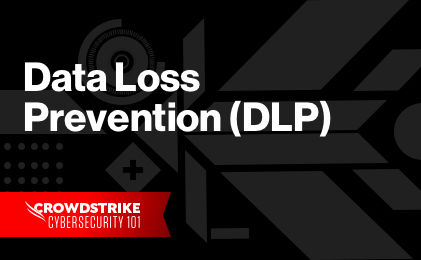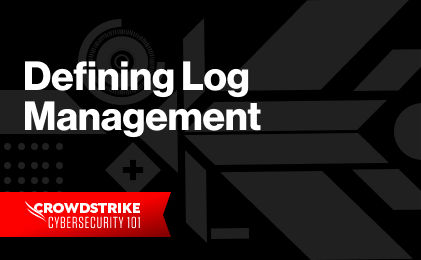A relational database is a type of database that stores data objects that have relationships with one another. Relational database schemas use primary keys, foreign keys, and transaction locks to set certain constraints in the database. These databases are also Atomicity, Consistency, Isolation, and Durability (ACID)-compliant and enforce data integrity.
MySQL is a relational database management system (RDBMS). PostgreSQL is an object-relational database management system (ORDBMS), which is a relational database that uses an object-oriented database model.
In this article, we will learn about the main features of PostgreSQL and MySQL, compare the two database management systems, and learn when to use PostgreSQL vs MySQL.
What is PostgreSQL?
PostgreSQL is an innovative and enterprise-class ORDBMS that supports querying for Structured Query Language (SQL) and JavaScript Object Notation (JSON). The object-relational nature of PostgreSQL means it can support objects, classes, and inheritance.
PostgreSQL is an open-source and powerful ORDBMS. Years of development have contributed to its reliability, integrity, and accuracy. Many web, mobile, and cloud applications use PostgreSQL as a standard datastore or data warehouse. It’s known for supporting advanced data types and the kinds of performance capabilities commonly found in commercial databases such as Oracle Database Service and Microsoft SQL Server.
Features of PostgreSQL
PostgreSQL has some unique features, which include:
Data types and languages: PostgreSQL is flexible and has support for multiple data types that include:
- Boolean
- Integer
- Numeric
- String
- Date/Time
- Array
- Range/Multirange
- UUID
- JSON/JSONB
- XML
- Key-value pairs (hstore)
- Circle
- Line
- Point
- Polygon composite
- … and other custom types.
Software developers can also create custom data types, functions, and procedures. Supported procedural languages include PL/pgSQL, Perl, and Python.
Multi-Version Concurrency Control (MVCC): PostgreSQL fully supports Multi-Version Concurrency Control and multi-node replication. Replication can be asynchronous, synchronous, or logical.
Disaster recovery and security: For point-in-time disaster recovery, PostgreSQL uses write-ahead logging (WAL), a technique that logs your data in secure storage before updating your database. This way, you can guarantee the durability of your write operations when a server crashes.
The ORDBMS also has network-level, transport-level, and database-level security features. It uses TCP/IP sockets, firewalls, SSL certificates, roles, permissions, and row-level security (RLS). PostgreSQL can authenticate with Lightweight Directory Access Protocol (LDAP) and Pluggable Authentication Modules (PAM).
Indexing features and pluggable architecture: The PostgreSQL query engine is sophisticated, with state-of-the-art indexing features, sharding, partitioning, and various system views and functions. Querying also supports international character sets and full-text searching. Beyond the query engine, PostgreSQL has an extensible architecture for easy integration of extensions. Examples include PostGIS, ZomboDB, and TimescaleDB.
What is MySQL?
MySQL is the most common open-source relational database. It is the leading database for many popular applications, known for its reliability, stability, and security. MySQL is ideal for various use cases, including dynamic websites, content management systems (CMS), and embedded databases for software and hardware.
Over the years, MySQL has integrated performance improvements. After 2009, the InnoDB storage engine replaced MyISAM to solve performance problems.
Features of MySQL
Querying and data types: MySQL is easy for software developers to set up and manage. They can use the available client tools like mysqladmin and MySQL workbench. For writing queries, the RDBMS also supports various data types, including:
- Integer
- Float
- Double
- Date
- Time
- DateTime
- Timestamp
- Character
- Variable character
- Text
- Blob
- Year
- … and more.
MySQL also supports window functions and common table expressions. Beyond these data types, software developers can implement advanced search techniques using the MySQL full-text and Unicode character set search.
Troubleshooting and disaster recovery: For point-in-time disaster recovery, MySQL uses the data from the binary logs. This data contains details about the updates on the MySQL instance. The RDBMS also supports advanced replication technologies for availability and disaster recovery. For troubleshooting any errors that occur, database administrators can use the slow query log offered by MySQL.
Flexibility and productivity: The MySQL Document Store allows users to build SQL and NoSQL functionality in the same application. This tool promotes flexibility in MySQL. The RDBMS also has tools that promote productivity, including stored procedures, triggers, and views for reusable SQL statements.
Comparing Between PostgreSQL and MySQL
Software developers often need to choose between these two databases. Although similar, they have some important distinctions and are suitable for separate use cases. Both PostgreSQL and MySQL have the following aspects in common:
- Open source and actively maintained
- Use SQL
- Account management features like roles, groups, and individual users
- Large community and vendor support
- Graphical User interface (GUI) and command-line tools for interactivity
Although they share much in common, there are some important differences to note:
- The inception of MySQL was in the early days of the web, and many projects adopted it. Many applications still use it today, and its mass adoption makes it a more popular database.
- You can use PostgreSQL in enterprise applications, and it supports more features. This makes it a more advanced database.
- MySQL uses a relational database architecture. It stores and provides access to data points related to one another.
- PostgreSQL uses an object-relational database architecture. In addition to the functionalities of a relational database, PostgreSQL supports objects, classes, and inheritance.
Supported Data Types
The following table summarizes the different data types and shows which databases support each type:
| Data Types | Supported in MySQL | Supported in PostgreSQL |
|---|---|---|
| Boolean | Yes | Yes |
| Integer | Yes | Yes |
| Character | Yes | Yes |
| String | Yes | Yes |
| Blob | Yes | Yes |
| Date/Time | Yes | Yes |
| Array | No | Yes |
| Range/Multirange | No | Yes |
| UUID | No | Yes |
| JSON | Yes | Yes |
| XML | No | Yes |
| Hstore | No | Yes |
| Circle | No | Yes |
| Line | No | Yes |
| Point | No | Yes |
| Polygon | No | Yes |
| Composite | No | Yes |
| Custom Types | No | Yes |
Supported Index Types
The following table below summarizes the different index types and shows which of the databases support each type.
| Index Type | Supported in MySQL | Supported in PostgreSQL |
|---|---|---|
| B-tree indexes | Yes | Yes |
| HASh indexes | Yes | Yes |
| GIN indexes | No | Yes |
| BRIN | No | Yes |
| GiST indexes | No | Yes |
| SP-GiST indexes | No | Yes |
Support for extensions: PostgreSQL supports extensibility and customization. To extend the functionality of your database, use PostgreSQL extensions. MySQL does not have this extensibility feature.
Support for CASCADE: CASCADE is used to delete or update an entry from the child and parent table. PostgreSQL supports CASCADE for dropped and truncated tables, but MySQL does not.
Implementation languages: The implementation language for MySQL is C/C++, while the implementation language for PostgreSQL is C.
Feature support: PostgreSQL supports MVCC, materialized views, and table inheritance, while MySQL has only limited MVCC support with InnoDB.
Support for stored procedures: PostgreSQL supports advanced procedures and stored procedures, while MySQL supports only stored procedures.
Support for functions and triggers: With PostgreSQL, you can use built-in functions and triggers, and you can create your custom functions. On the other hand, MySQL only supports built-in functions and triggers.
Performance profiles: PostgreSQL is faster with large datasets, complex queries, and read-write operations. MySQL is faster for read-only operations.
Connection: In MySQL, database-created connections are operating system threads. In PostgreSQL, connections are operating system processes.
Logging: PostgreSQL uses the CSVLOG format for parsing logs. MySQL has various log files for different activities to aid log classification. MySQL also offers database logging, which may help with security (to prevent logging sensitive SQL statements).
Client tools: The most common GUI tool for PostgreSQL is pgAdmin. For MySQL, the tool to use is MySQL Workbench. MySQL offers a wide range of drivers for different programming languages like Ruby, Perl, PHP, C#, and Python. PostgreSQL has a broader range of programming language support, including languages like Haskell, Rust, Swift, Erlang, and Lua.
Choosing Between MySQL and PostgreSQL
When choosing one database over another, your specific business needs will play a key role. As these databases have unique features, it is crucial to know when to use them.
Since MySQL is beginner-friendly and easy to manage, you can use it for simple web applications. MySQL is ideal for your project if you require a relational database management system for web applications like a CMS or eCommerce Solutions. You can also use MySQL in the backend for configuration and user session data.
PostgreSQL is ideal for your project if your requirements revolve around complex systems, integration, and data warehouse support. You should also consider it if you are looking for a feature-rich database that can easily manage large and complex queries in enterprise applications or if you need support for procedural languages.
Discover the world’s leading AI-native platform for next-gen SIEM and log management
Elevate your cybersecurity with the CrowdStrike Falcon® platform, the premier AI-native platform for SIEM and log management. Experience security logging at a petabyte scale, choosing between cloud-native or self-hosted deployment options. Log your data with a powerful, index-free architecture, without bottlenecks, allowing threat hunting with over 1 PB of data ingestion per day. Ensure real-time search capabilities to outpace adversaries, achieving sub-second latency for complex queries. Benefit from 360-degree visibility, consolidating data to break down silos and enabling security, IT, and DevOps teams to hunt threats, monitor performance, and ensure compliance seamlessly across 3 billion events in less than 1 second.





